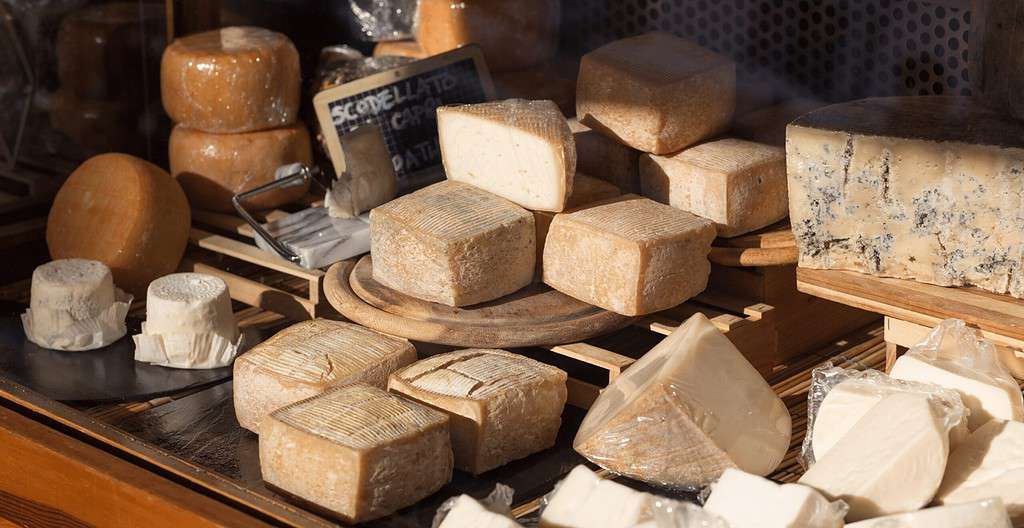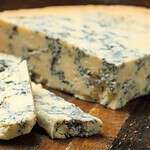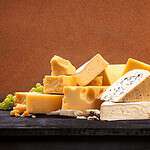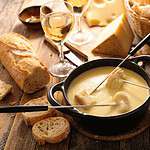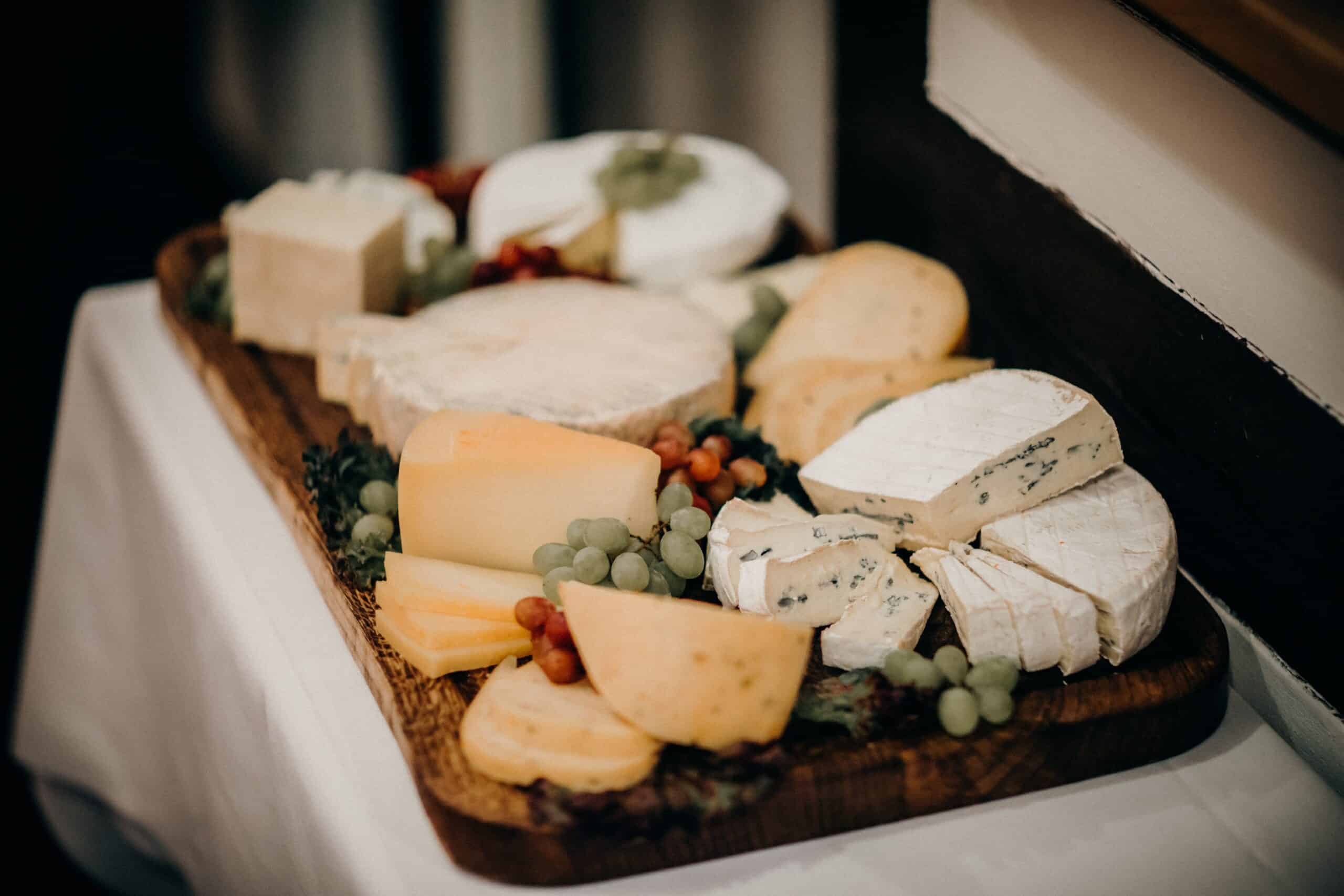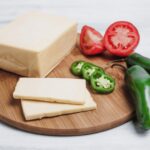For individuals with celiac disease or gluten sensitivity, knowing whether food products contain gluten is crucial for avoiding adverse health effects. Cheese, a staple in many diets, comes into question regarding its gluten content. Generally, cheese is a gluten-free product; however, there are exceptions based on how the cheese is produced and which additional ingredients may be included.

Understanding gluten is important for assessing whether a particular cheese contains this group of proteins. Gluten is found in wheat, barley, rye, and crossbreeds of these grains. Meanwhile, the basic process of cheese production typically involves the curdling of milk, which in itself does not introduce gluten. However, complications arise when considering additives, the potential for cross-contamination, and the presence of modified food starches in some cheese products.
Key Takeaways
- Most cheese is naturally gluten-free, but cross-contamination or additives can introduce gluten.
- While the cheese-making process doesn’t generally involve gluten, attention must be given to labeling and certification to ensure safety.
- It’s advisable for those on a gluten-free diet to seek out cheeses that are clearly labeled as gluten-free.
Understanding Gluten and Its Sources
To inform our understanding of gluten-free diets, we need to first identify what gluten is and where it’s typically found. We’ll also explore how it’s used in food production.
Defining Gluten and Gluten Sensitivity
Gluten is a group of proteins commonly found in wheat, rye, and barley. It provides elasticity to dough, helping it rise and maintain its shape. Gluten sensitivity varies among individuals, ranging from non-celiac gluten sensitivity, which is milder and often gastrointestinal, to celiac disease, an autoimmune condition where gluten damages the small intestine.
Common Sources of Gluten
The principal sources of gluten include:
- Cereals: Wheat, barley, and rye based products.
- Breads and baked goods: Often made with wheat flours.
- Pasta and noodles: Traditionally made from wheat.
Less obvious sources of gluten are:
- Sauces and gravies: Thickened with gluten-containing flours.
- Processed foods: May contain gluten as a filler or stabilizer.
- Malt: Derived from barley and used in various products, including beverages.
Gluten in the Manufacturing Process
During manufacturing, gluten is often introduced to food products as a binding agent, which can make purely gluten-free products susceptible to contamination if produced in the same facilities as gluten-containing items. It is crucial for those with celiac disease or non-celiac gluten sensitivity to verify that their food choices are labeled as “gluten-free,” indicating the product is safe for their consumption.
The Basics of Cheese Production
Cheese production is a careful process where specific ingredients and conditions result in the variety of cheeses we enjoy. The quality of milk, the use of rennet, cultures, bacteria, and the aging process all play significant roles.
Ingredients in Cheese Making
We start with milk, the fundamental ingredient in cheese making. It may come from various sources including cows, goats, and sheep. The milk’s components, which include protein (mainly casein), fat, and lactose, are crucial for the cheese’s texture and flavor. To the milk, we add salt, which enhances flavor, aids in preservation, and controls bacteria growth.
Typical ingredients in cheese making:
- Milk: Source of protein, fat, and lactose.
- Salt: For flavor, preservation, and bacteria control.
- Starch is generally not an ingredient in traditional cheese making.
The Role of Rennet, Cultures, and Bacteria
Rennet is a set of enzymes used to coagulate milk, separating it into solids (curds) and liquid (whey). It is essential for defining the cheese’s ultimate texture. Cultures are specific strains of bacteria added to milk to begin the fermentation process, influencing the cheese’s taste, smell, and texture. We carefully select and combine these elements to transform milk into cheese.
Key elements in this process:
- Rennet: Coagulates milk, affecting the final texture.
- Cultures and Bacteria: Ferment milk, impacting flavor, aroma, and texture.
Types of Cheese and Their Basic Properties
We categorize cheese types by their texture and the method of production which include fresh, soft-ripened, semi-hard, hard, and blue cheeses. The proportion of milk’s main components – protein, fat, and liquid – and the fermentation process are critical in determining the category.
Cheese types and their properties:
| Type | Texture | Production Method | Main Components |
|---|---|---|---|
| Fresh | Soft, moist | Minimal aging | High moisture |
| Soft-ripened | Creamy, runny | White mold surface | Higher fat |
| Semi-hard | Firmer | Moderate aging | Balanced moisture |
| Hard | Very firm | Long aging | Low moisture |
| Blue | Veined | Blue mold spores | Varied fat content |
Each cheese type is distinct in its creation and characteristics, but all begin with the same foundation of milk transformed through a precise and monitored process.
Assessing Cheese for Gluten Content

When considering the gluten content in cheese, it’s essential to examine specific varieties of cheese, scrutinize processed cheeses for added gluten, and assess the risks of cross-contamination during cheese production.
Gluten-Free Cheese Varieties
Most natural cheeses like Cheddar, Swiss, Feta, Mozzarella, Parmesan, and Ricotta are inherently gluten-free. These cheeses are produced through traditional methods that do not involve gluten-containing ingredients. For instance:
- Cheddar Cheese: Aged and typically gluten-free unless cross-contamination occurs.
- Swiss Cheese: Naturally gluten-free with a distinct hole-riddled appearance.
- Feta Cheese: Traditionally made from sheep or goat milk and generally gluten-free.
For those with gluten sensitivities or celiac disease, it’s crucial to verify that the cheese has not been cross-contaminated and is labeled gluten-free.
Processed Cheeses and Added Gluten
Unlike natural cheese varieties, processed cheeses often contain additives that may include gluten. Some processed cheese products and spreads may use additives like wheat starch or modified food starch, which can contain gluten unless specified otherwise. Here’s a brief look at common additives:
- Wheat Starch: Can be a source of gluten; avoid unless labeled gluten-free.
- Modified Food Starch: Could be derived from wheat; look for a gluten-free label.
It’s our recommendation always to read the ingredients label carefully to ensure the cheese does not contain gluten or isn’t sourced from gluten-containing ingredients.
Contamination Risks in Cheese Production
Cross-contamination is a significant concern where gluten-free status can be compromised. This can occur during cheese manufacturing or even while cutting and packaging cheese in stores. For example:
- Blue Cheese: Sometimes cultured on bread mold, which may contain gluten, although many are still considered gluten-free.
- Goat Cheese: Usually gluten-free but could be cross-contaminated if facilities also process gluten-containing products.
To minimize the risk of unintentional gluten consumption, we suggest selecting cheeses that are certified gluten-free, which indicates they have been produced in a facility that avoids cross-contamination with gluten-containing products.
Labeling and Gluten-Free Certification

When purchasing cheese, we must be vigilant in examining labels and certifications to ensure they meet gluten-free standards, which are crucial for those following a gluten-free diet.
Reading and Understanding Food Labels
We always examine food labels with precision, as labels are our first line of defense in identifying whether cheese is safe for a gluten-free diet. A product that is marked as gluten-free must meet regulatory standards, which in the United States means it contains less than 20 parts per million (ppm) of gluten. It’s important for us to look for phrases like “gluten-free,” “free of gluten,” “no gluten,” and “without gluten.” These terms indicate that the manufacturer asserts the product complies with the required FDA standards.
The FDA’s Role in Gluten Labeling
The Food and Drug Administration (FDA) plays a pivotal role in gluten labeling. As of August 5, 2014, the FDA has mandated that labels claiming a product is gluten-free must adhere to the requirement of containing less than 20 ppm of gluten. This is acknowledged as a safe threshold for most people with celiac disease. We rely on the FDA’s regulations to reduce the risks of cross-contamination in gluten-free products found in grocery stores.
Tricia Thompson’s Advocacy for Accurate Labeling
Tricia Thompson, a leading dietitian, founded Gluten-Free Watchdog. Her work focuses on advocating for accurate gluten labeling and testing methods. We recognize her efforts in pushing for increased transparency and responsibility from manufacturers. Thanks to advocates like Thompson, the Celiac Disease Foundation and other organizations can better support individuals who require strict adherence to a gluten-free diet.
Practical Tips for a Gluten-Free Diet

Maintaining a gluten-free diet requires diligence, especially when selecting foods and preparing meals. Awareness of potential sources of cross-contamination is vital to protect the small intestine from damage and to ensure proper nutrient absorption.
Selecting Safe Foods at Grocery Store
At the grocery store, we focus on reading labels meticulously. Foods labeled with a gluten-free certification are safe. We often stick to naturally gluten-free products such as fruits, vegetables, meats, and dairy. Legumes, nuts, and most grains like rice and quinoa are also gluten-free. We carefully evaluate processed foods, as they can contain hidden sources of gluten.
Grocery Shopping Checklist:
- Fruits & Vegetables: Always safe, unless contaminated.
- Meats & Dairy: Typically gluten-free, watch for additives.
- Packaged Products: Look for gluten-free labels.
- Condiments & Sauces: Double-check ingredients for hidden gluten.
Avoiding Cross-Contamination at Home and Restaurants
At home, it’s crucial to have separate cooking utensils and preparation areas for gluten-free foods. We ensure to use separate toasters, cutting boards, and colanders to avoid cross-contamination. When eating out, we select restaurants with a gluten-free menu and communicate our dietary needs to the staff. It’s important to ask about food preparation practices to ensure meals are safely prepared without cross-contact with gluten.
Cross-Contamination Prevention:
- Home: Use separate kitchen tools and serving dishes.
- Eating Out: Choose restaurants with gluten-free options and discuss preparation methods.
Consulting a Dietitian for Dietary Needs
We highly recommend working with a dietitian who specializes in gluten-free diets. A dietitian can provide personalized advice to meet nutritional requirements and suggest alternatives to ensure a balanced diet. Seeking professional guidance helps us stay vigilant about avoiding gluten and keeping a diverse, nutrient-rich diet that supports the health of our small intestine.
Dietitian Consultation Benefits:
- Personalized Diet Plan: Tailored to individual nutrient needs.
- Educational Resources: Informed advice on managing a gluten-free lifestyle.
Health Considerations and Dietary Restrictions

We understand that for individuals with certain health conditions or dietary restrictions, knowing whether cheese is gluten-free is crucial. It’s important to consider both gluten and lactose content when selecting cheese to ensure it aligns with specific dietary needs.
Celiac Disease and Non-Celiac Gluten Sensitivity
For those with celiac disease or non-celiac gluten sensitivity, ingesting gluten can lead to serious health complications. We need to ensure that the cheese we choose is certified gluten-free. While most natural cheeses are gluten-free, cross-contamination during manufacturing or added ingredients may introduce gluten. It’s essential to read labels carefully or consult with the manufacturer when in doubt.
- Celiac Disease: Requires strict adherence to a gluten-free diet.
- Non-Celiac Gluten Sensitivity: Symptoms may be alleviated by following a gluten-free diet.
Lactose Intolerance and Dairy-Free Alternatives
Lactose intolerance affects our ability to digest lactose, the sugar found in milk and dairy products like cheese. For us, choosing lactose-free or dairy-free cheese alternatives might be necessary. Here’s a brief list of potential alternatives:
- Hard aged cheeses: Lower lactose content; may be better tolerated.
- Plant-based cheeses: Made from nuts or soy; naturally dairy and lactose-free.
When opting for dairy-free alternatives, it’s vital to still verify the gluten-free status as some substitutes may contain gluten-containing additives.
Maintaining a Balanced Diet and Nutrient Intake
We must be mindful of our nutrient intake when adhering to gluten-free and lactose-free diets. Cheese can be a good source of calcium, protein, and other vital nutrients. Here are some tips to ensure we maintain a balanced diet:
- Natural cheeses: Tend to be gluten-free and are a good source of nutrients.
- Fortified alternatives: Ensure dairy-free substitutes are fortified with calcium and vitamin D.
It’s our responsibility to select cheese that fits within our dietary needs while still providing nutritional value.
Additional Considerations when Choosing Cheese
When we consider the variety of cheeses available, it’s important to note the nuances in texture and flavor, the application in cooking and pairing, as well as the nutritional benefits they offer.
Cheese Texture and Flavor Profiles
Cheeses like Mozzarella and Brie are known for their soft textures; Mozzarella has a creamy and stretchy quality, ideal for melting on pizzas, while Brie, with its smooth and buttery consistency, is excellent on crackers. In contrast, cheeses such as Parmesan and Roquefort have firmer textures; Parmesan is hard and grainy, perfect for grating over dishes, and Roquefort presents a crumbly texture with a pungent taste that can enhance salads and sauces.
- Mozzarella
- Texture: Creamy, stretchy
- Taste: Mild, milky
- Brie
- Texture: Soft, creamy
- Taste: Rich, buttery
- Parmesan
- Texture: Hard, grainy
- Taste: Nutty, salty
- Roquefort
- Texture: Crumbly, moist
- Taste: Strong, tangy
Cooking and Pairing Cheeses with Other Foods
The way we use cheese in cooking can alter its properties and the flavors it imparts. Provolone can be a versatile player in sandwiches and baked dishes due to its ability to melt well without becoming greasy. In terms of pairing, the delicacy of goat cheese can be complemented by the addition of herbs and spices, or the crunchiness of nuts, creating a harmonious balance for the palate.
- Provolone
- Melting: Excellent for sandwiches and casseroles
- Goat Cheese
- Pairing: Herbs, spices, and nuts enhance flavor
Cheese as a Source of Protein and Other Nutrients
Cheese can be a good source of protein and other nutrients, essential for maintaining energy levels and preventing fatigue. Parmesan, for example, is not only flavorful but also packed with protein. When considering a cheese like Roquefort, we find it is rich in nutrients but also higher in fat, which is why portion control is key.
- Parmesan
- Nutrients: High protein content
- Roquefort
- Consideration: Rich in nutrients, higher in fat
Frequently Asked Questions
As experts in dietary considerations, we understand the importance of accurate information for those following a gluten-free diet. Here, we address common queries relating to the gluten content in cheese.
Which varieties of cheese can individuals on a gluten-free diet safely consume?
Most natural cheeses such as cheddar, Swiss, and Parmesan are safe for gluten-free diets as they are made from milk and do not contain gluten. We always recommend checking the label for any added ingredients that might introduce gluten.
How can I ascertain whether a specific brand of cheese is free from gluten?
To verify if a cheese brand is gluten-free, we advise reading the product labeling or contacting the manufacturer directly. Look for certifications from reputable gluten-free organizations which serve as a trustworthy indication of gluten absence.
Are there any types of cheese typically considered to contain gluten?
Cheeses that may contain gluten include those that have additives for flavor or texture, such as beer cheeses or cheeses with certain spice blends. Pre-shredded cheeses sometimes have flour or anti-caking agents that can contain gluten.
Can people with gluten sensitivities safely include dairy products like milk and butter in their diets?
Dairy products like milk and butter are naturally gluten-free and can be consumed by people with gluten sensitivities. However, we caution against flavored or processed dairy products without first confirming their gluten status.
What factors should be considered when selecting gluten-free snacks that include cheese?
When choosing gluten-free cheese snacks, we suggest scrutinizing ingredients for gluten-containing additives and cross-contamination warnings. Selecting products specifically labeled as gluten-free offers additional assurance.
In what ways does the processing of cheese affect its gluten content?
The processing of cheese can affect its gluten content if it involves the addition of ingredients that contain gluten or if the cheese is processed on shared equipment with gluten-containing products. We recommend seeking cheeses that are labeled as processed in a gluten-free facility to minimize the risk of cross-contamination.

